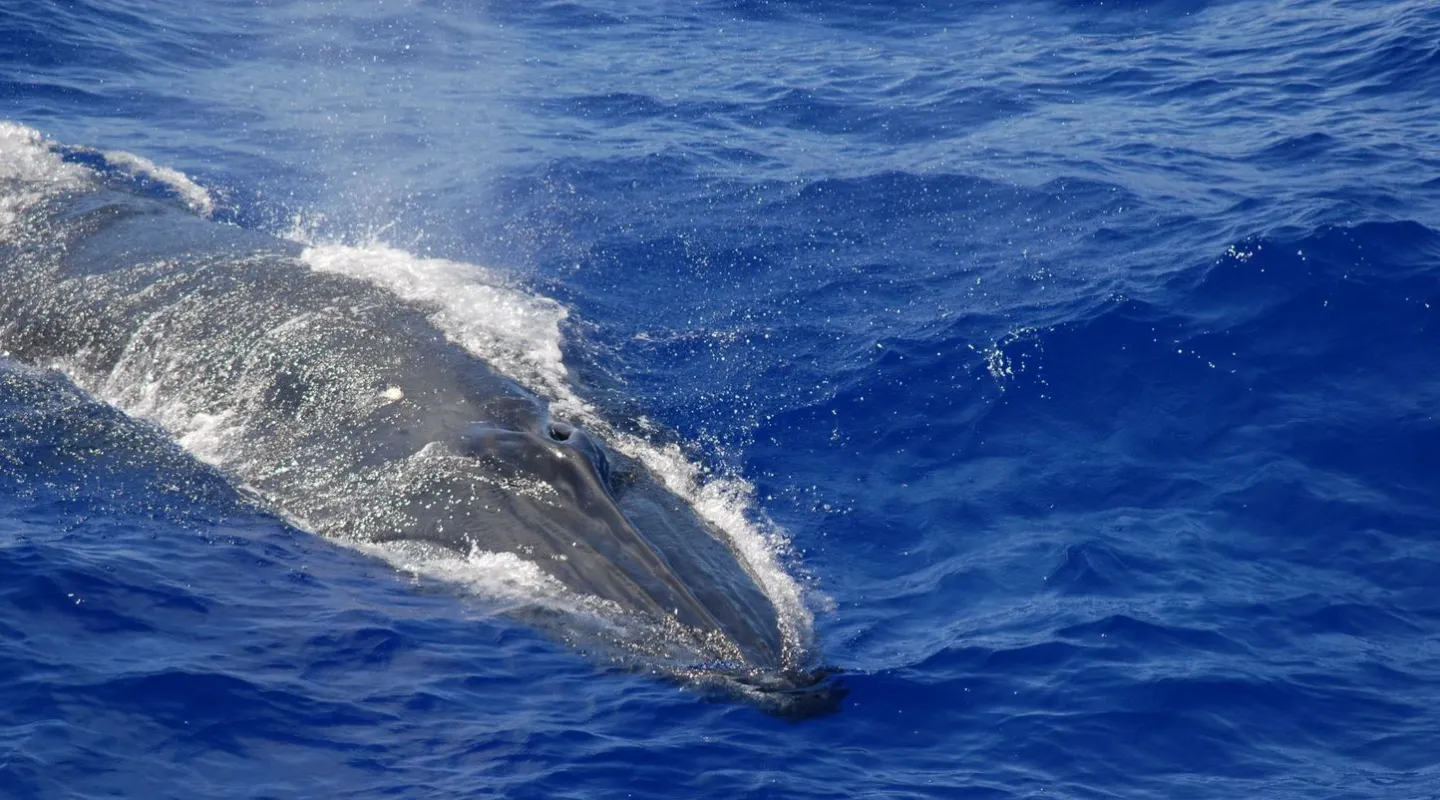Virtual animal in augmented reality
Rice's whale is one of the impressive figures of the Grand Large experience. Giant among species of the high seas, the Bryde's whale symbolizes the power of marine life and the role of species.

Virtual animals
Virtual animal in augmented reality
Rice's whale is one of the impressive figures of the Grand Large experience. Giant among species of the high seas, the Bryde's whale symbolizes the power of marine life and the role of species.

Identity card
Appendix I
Atlantic Ocean and Indo-Pacific; tropical and subtropical areas
Pelagic down to depths of 300 m.
14 to 15 m, 20 tonnes, 25 t. max.
Rice’s whales feed on small fish, mackerel, herring and anchovy, for those in coastal areas, and also on crustaceans
50 to 70 years

They are in the habit of throwing themselves mouths-wide-open on shoals of fish. They are said to be “gobblers”.
Incredible! In 2019, Rainer Schimpf, a diver was gulped up by a Rice’s whale off the coast of South Africa. The diver wanted to film a “sardine run”, the migration of shoals of sardines that attract large numbers of predators including the Rice’s whale. Sucked into the cetacean’s large mouth, the diver was released a few seconds later, without any damage to himself or to his photographic equipment. A story worthy of Pinocchio!
Rice’s whale, Balaenoptera edeni, is a baleen whale that lives in the warm temperate waters of the Atlantic, Pacific and Indian oceans. They usually live in groups of 10 to 20 individuals on their feeding grounds. You can find these whales in the open sea, near the coast and on the continental shelf. However, they can dive down to depths of 300 metres for 5 to 15 minutes in their quest for food.
Rice’s whales can grow to a length of 15 metres and a weight of 20 tonnes. The females are slightly bigger than the males. At birth the whale calf is more than 3 metres long and weighs more than 900 kg. This cetacean is characterised by a fine, dark grey body with a white belly and pink-tinted throat.
These rorquals migrate to the equator in winter, although some groups are sedentary. They communicate by means of short, low-frequency moaning sounds. Sexual maturity is reached when the whale is 10 to 12 metres long, aged between 10 and 13. Gestation lasts between 11 and 12 months. The female reproduces every two years and feeds her calf for 6 months.
Since commercial whaling came to an end, the threats weighing on Rice’s whales are bycatch and throttling on fishing nets, and sometimes collisions with ships too. But the impact of these incidents on the rorqual population is not known.
Because they are smaller and give less oil and meat than other whales, Rice’s whales have suffered less from whaling, and their stock therefore seems to be relatively intact. Japan has a special permit authorising it to take a certain number of whales every year.
The species is classified in Appendix II of the Convention on Migratory Species (CMS) and Appendix I of CITES.
AUGMENTED REALITY EXPERIENCE

Augmented-reality animals
The Ocean Mag
In the spotlight
A look back at the year's births at Nausicaá.

Article
The Portuguese Parliament has adopted a moratorium banning seabed mining in its territorial waters until 2050.
Article
Combining art, science and industry to restore coral reefs.